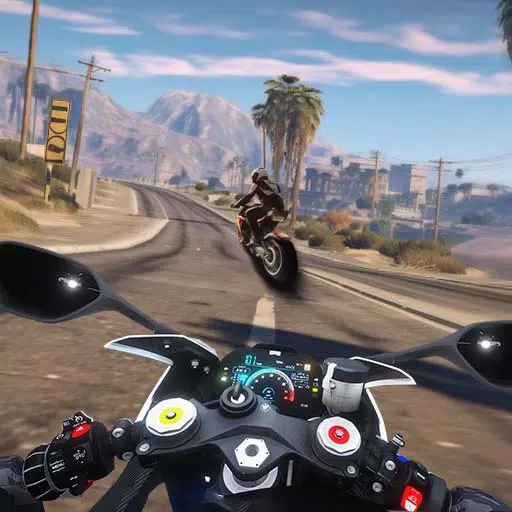For the last few generations, AMD has been striving to compete with Nvidia in the high-end graphics card market. However, with the launch of the AMD Radeon RX 9070 XT, Team Red has shifted its focus away from the ultra-high-end segment dominated by the RTX 5090, and instead aimed to deliver the best graphics card for the majority of gamers—a goal it has undoubtedly achieved.
Priced at $599, the AMD Radeon RX 9070 XT goes head-to-head with the $749 GeForce RTX 5070 Ti, establishing itself as one of the top GPUs available today. What makes it even more appealing is the inclusion of FSR 4, marking the first time AMD has introduced AI upscaling to its graphics cards. This feature makes the Radeon RX 9070 XT an excellent choice for 4K gaming, especially for those who aren't ready to spend $1,999 on the RTX 5090.
Purchasing Guide
----------------The AMD Radeon RX 9070 XT will be available starting March 6, with a starting price of $599. Be aware that prices may vary, particularly with third-party models, which might be priced higher. Aim to purchase one for under $699 to get the best value.
AMD Radeon RX 9070 XT – Photos

 4 Images
4 Images

Specs and Features
------------------Built on the RDNA 4 architecture, the AMD Radeon RX 9070 XT brings significant upgrades to its shader cores, but the standout features are the new RT and AI Accelerators. The AI Accelerators are particularly noteworthy as they power FidelityFX Super Resolution 4 (FSR 4), introducing AI upscaling to AMD's lineup for the first time. While FSR 4 might not boost framerates as much as FSR 3.1, it significantly enhances image quality. For those prioritizing framerate, the Adrenalin software offers an easy toggle to switch off FSR 4.
AMD has also improved the efficiency of its shader cores, allowing the Radeon RX 9070 XT to outperform its predecessor, the RX 7900 XT, despite having fewer Compute Units (64 vs. 84). Each Compute Unit in the RX 9070 XT contains 64 Streaming Multiprocessors, totaling 4,096, along with 64 ray accelerators and 128 AI accelerators.
However, the RX 9070 XT has less memory than the RX 7900 XT, with 16GB of GDDR6 on a 256-bit bus compared to 20GB on a 320-bit bus. Although this is a downgrade in capacity and bandwidth, it remains sufficient for most 4K gaming needs. The new architecture is more efficient, but the RX 9070 XT requires a slightly higher power budget of 304W compared to the 300W of the RX 7900 XT.
The RX 9070 XT does not have a reference design from AMD, meaning third-party manufacturers are the only option. I reviewed the Powercolor Radeon RX 9070 XT Reaper, which features a compact triple-fan design that maintained a temperature of 72°C during testing. The card uses standard power connectors, requiring two 8-pin PCI-E connectors and a recommended 700W power supply. It includes three DisplayPort 2.1a and one HDMI 2.1b port, though the addition of a USB-C port would have been welcome for more versatility.
FSR 4
-----For years, AMD has been in need of an AI upscaling solution to rival Nvidia's DLSS. Previous versions of FidelityFX Super Resolution suffered from issues like ghosting and fuzziness. The Radeon RX 9070 XT introduces FSR 4, an AI-powered upscaling solution that improves image quality over the temporal upscaling of FSR 3, albeit with a slight performance hit.
In Call of Duty: Black Ops 6 at 4K Extreme settings with FSR 3.1 set to "Performance," the RX 9070 XT achieved 134 fps. Switching to FSR 4 reduced this to 121 fps, a 10% drop, but with enhanced image quality, particularly in details like grass and in-game text. Similarly, in Monster Hunter Wilds, the RX 9070 XT delivered 94 fps at 4K with FSR 3 and ray tracing enabled, but dropped to 78 fps with FSR 4—a 20% reduction.
Despite the performance hit, the improved image quality may be worthwhile for those prioritizing visual fidelity in single-player games. FSR 4 is an opt-in feature, and users can disable it through the Adrenalin software, where it was off by default on my review unit due to early drivers.
AMD Radeon RX 9070 XT & 9070 – Benchmarks

 11 Images
11 Images



Performance
-----------AMD has made a strong statement with the Radeon RX 9070 XT. Priced at $599, it undercuts the Nvidia GeForce RTX 5070 Ti by 21% while being, on average, 2% faster. While there are games where the RTX 5070 Ti outperforms the RX 9070 XT, their competitive performance is a significant achievement for AMD.
In my comprehensive test suite, the RX 9070 XT proved to be about 17% faster than the RX 7900 XT, which launched at $899 two years ago, and 2% faster than the $749 RTX 5070 Ti. At 4K, the RX 9070 XT maintains its lead, making it an excellent choice for entry-level 4K gaming, even with ray tracing enabled.
All tests were conducted using the latest drivers available. Nvidia cards were tested with Game Ready Driver 572.60, except for the RTX 5070, which used review drivers. AMD cards were tested with Adrenalin 24.12.1, except for the RX 9070 XT and RX 9070, which used pre-release drivers provided by AMD.
Although 3DMark isn't a playable game, it provides a valuable comparison of graphics card potential. The RX 9070 XT outperformed the RX 7900 XT by 18% in Speed Way but lagged behind the RTX 5070 Ti by the same margin. In the Steel Nomad benchmark, however, the RX 9070 XT's performance jumped to 26% over the RX 7900 XT and even surpassed the RTX 5070 Ti by 7%.
Test System
CPU: AMD Ryzen 7 9800X3D Motherboard: Asus ROG Crosshair X870E Hero RAM: 32GB G.Skill Trident Z5 Neo @ 6,000MHz SSD: 4TB Samsung 990 Pro CPU Cooler: Asus ROG Ryujin III 360In Call of Duty: Black Ops 6, the RX 9070 XT led the RTX 5070 Ti by 15%, showcasing AMD's advantage in this title. However, Cyberpunk 2077, traditionally favoring Nvidia, saw the RTX 5070 Ti slightly ahead by 5% at 4K with Ray Tracing Ultra and FSR 3 set to performance mode.
Metro Exodus, another ray tracing-heavy game, saw the RX 9070 XT and RTX 5070 Ti performing similarly at 4K without upscaling, with the RX 9070 XT achieving 47 fps compared to the RTX 5070 Ti's 48 fps. The RX 7900 XT struggled here, managing only 38 fps.
Red Dead Redemption 2 highlighted the RX 9070 XT's Vulkan performance, achieving 125 fps at 4K with all settings maxed, outpacing the RTX 5070 Ti's 110 fps and the RX 7900 XT's 106 fps.
In Total War: Warhammer 3, the RX 9070 XT fell 13% behind the RTX 5070 Ti, though it still performed better than the RX 7900 XT. Assassin's Creed Mirage saw the RX 9070 XT reclaim its lead, achieving 163 fps compared to the RTX 5070 Ti's 146 fps and the RX 7900 XT's 150 fps.
Black Myth Wukong showcased the RX 9070 XT's ray tracing capabilities, achieving 70 fps at 4K with the Cinematic Preset and FSR set to 40%, outperforming the RTX 5070 Ti's 65 fps. Forza Horizon 5 saw the RX 9070 XT slightly ahead at 158 fps compared to the RTX 5070 Ti's 151 fps.
Announced quietly at CES 2025, the Radeon RX 9070 XT feels like AMD's strategic move against Nvidia's Blackwell graphics cards. Priced at $599, it represents a return to sensible pricing in the graphics card market. While it may not match the raw power of the RTX 5080 or RTX 5090, those cards are overkill for most users and cost significantly more.
The RX 9070 XT evokes memories of the GTX 1080 Ti, which was the last great flagship card launched at $699 in 2017. Although the RX 9070 XT doesn't claim the title of the fastest consumer card, it feels like the first worthy flagship we've seen since then.

























![City Devil: Restart [v0.2]](https://img.icssh.com/uploads/38/1719554737667e52b102f12.jpg)




